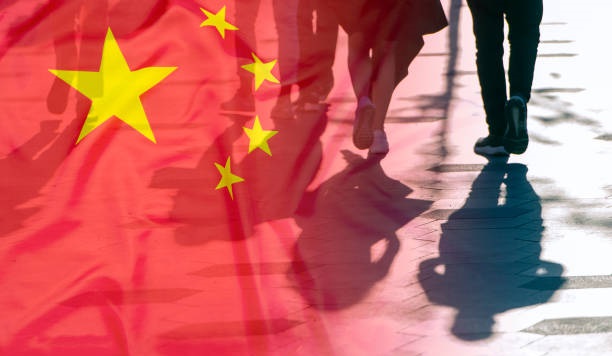
With China the US may have a third way between being defeated and collapsing or winning a hot war. It can set its own global BRI.
We are at a moment when “derisking” with China is happening, some kind of economic “decoupling” doesn’t seem far behind, and Cold War II is spreading its wings. Yet, short of a possible war, many things seem confused and confusing about a systematic approach to China in America.
At this juncture, all developed economies are beginning to calculate the costs of derisking and the steps necessary to achieve it. This situation is quite different from the late 1940s, the onset of Cold War I, when the capitalist and socialist economies emerged from a hot war (WWII) and were eager to develop their own systems independently, and no side had a particular extra charge in a Cold War; in fact, it made either side safer.
Soon after WWII, the two sides faced each other in conflicts with uncertain boundaries. In one such conflict involving China, the fight between the nationalists of the KMT and the Communists of the CCP, the US remained relatively aloof while the USSR armed the CCP to victory. The lines between America and communist China were clearly drawn only after the People’s Liberation Army (PLA) intervened in the Korean War.
This time, the conflict follows over 30 years of booming commercial integration, which was supposed to lead to political and social assimilation. China was at the forefront of this wave, becoming increasingly joined into the American system since the early 1980s. “Derisking” from China means unraveling over 40 years of history. Usually, such a shift in history occurs through a hot war. While we have been spared the worst outcome so far, even a peaceful transition will not be easy for either side.
The substantial economic adjustments required to accommodate American derisking will be socially and economically immensely expensive for China. Its financial structure heavily relies on a massive trade surplus with America and G7 countries, making it vulnerable to these changes. However, owing to its political structure and the fact that it is a single country, the political implementation of these changes can be relatively straightforward. For America and Western countries, the situation is the opposite. Economically, the transition will be expensive but not overwhelmingly so. Production in China can be easily moved elsewhere with a little extra disservice. Politically, because numerous countries have various priorities and democracy necessitates building a broad consensus, its implementation will be more complex.
One point of particular complexity is calculating new production efficiency. Over the past 30 years, price calculations have been straightforward. For instance, a shirt costing $10 in America could be produced for $1 in China, leading to the migration of manufacturing to China. This cost discrepancy obscured the developed world’s expenses related to trade unions, the welfare state, pollution management, et cetera. Will these hidden costs be factored back into the efficiency calculations?
More than 20 years ago, the World Trade Organization (WTO) established parameters for dumping, assuming an international gradual political and social convergence of its signatories. This was also the premise behind the Most Favored Nation (MFN) treaty renewal between the US and China, facilitating China’s admission to the WTO. However, political convergence did not occur due to domestic political reasons in China, leading to a very novel and complicated situation today.
Telegrams and World Order
This background creates a different environment for the US to start conceiving a China policy, as was sketched about the USSR in George Kennan’s famous 1946 Long Telegram. Kennan’s context and premise were totally diverse. WWII against the fascists proved that the task with the USSR was straightforward: defeat them, and the world order would return to normal. This principle had worked with the defeat of the fascist powers and was expected to work again with the Soviets, allowing their system to fester, rot, and collapse. The Soviets didn’t want to trade with capitalist countries, a sentiment warmly reciprocated, allowing capitalism’s efficiency to undermine the Soviet promise of bringing paradise to earth.
China, however, is unlike that. It was integrated into a global supply chain. In this way, its economy became relatively efficient and improved the lives of over a billion people. China doesn’t claim to bring paradise on earth and argues that the present “derisking” is due to the US being envious of China’s success and wanting to bring it down. It’s not the system’s fault, as it was with the USSR, but nationalist envy, a sentiment well-known and understood in China. Therefore, even if the Chinese system rots and collapses, Beijing can spin the story that it’s because of evil foreigners, a common refrain in Chinese history.
Thus, we should consider a singular approach to China, beginning with other premises. Perhaps we need to look at the situation from a different perspective.
Chinese philosopher, Mandarin, and general Wang Yangming (1472-1529) may help us reframe the issue. He suggested we should start from the end: determining where we want to go, what we want to achieve, and what we can do to achieve it. This is both a gnoseological and practical problem. We can’t know and solve everything; we can only know enough to achieve our goals. For example, is the food poisonous or not? Is the outside temperature warm or cold for me? Is the cab fast enough to reach the appointment? Then, we can decide what to do based on the information needed and collected.
In the process, we need a calm and cold heart to be open to positive or negative surprises that can take us where we didn’t think because our thinking abilities are limited.
In this case, perhaps we should think that the problem is not China per se; it is that China’s rise has disrupted the old order. The idea was that China would adapt to the existing order, but for various reasons, China was unwilling to adapt.
Then, the old order is gone. It was already wobbling at the end of the Cold War, but it’s not tenable with China refusing full integration. China is establishing something else, trying to skirt the present system partially.
Therefore, the issue is the world order, not just China. It is insufficient to hold on to what exists now, torn by the end of Cold War I and the beginning of Cold War II. The present order is in disarray, as evidenced by the ongoing wars in Ukraine and Gaza, and it needs significant mending. Thus, the question is: what order does China want to have? What order does the US want if China refuses to integrate into the present system? China’s task, short of an American collapse, is tougher because it needs to build something brand new, whereas the US needs to fix and revamp the present order.
Moreover, this newish order must be promoted, established, and maintained. Here, geography serves as the basis of the new world order launched by China.
The Belt and Road Initiative (BRI) idea sums up Marco Polo’s route. He arrived in China by land and returned by sea.
The land route tells the story of the Indo-European, Mongol-Turkic migrations and invasions across the Eurasian landmass over the past 3,000 years, using the Central Asian flatland as a highway crossed by horses and carts. It is the basis of Mackinder’s theories of controlling the Asian heartland.
The “belt,” Marco Polo’s sea lane back to Venice, follows the Mediterranean tradition, from the Phoenicians, Greeks, and Romans to the Turks, Spanish, and Portuguese, who extended this concept globally, followed by the Dutch, French, English, and Americans. This forms the basis of Mahan’s ideas of the rimland to control the continents.
Although the BRI combines these two traditions, the concept is not new. The process of industrialization did it. The English had the train locomotive first and then the steamboat. The Americans built railways and then a powerful navy. Efficient railways were crucial during the Civil War when England backed the southern states against the North. It was a major setback for the mighty English Empire then. The link between the East and West coasts of the US was a railway, crushing the native Indians and the bison. The Roman Empire also did this earlier. It controlled the Mediterranean and built the first comprehensive road network around it.
If the US wants to promote, establish, and maintain a new political and economic order, it must look at history. It has sea lanes and must develop land routes. This should have been the primary goal of the wars in Afghanistan and Iraq. However, Washington became distracted by a crowd of lesser issues.
Now, the two traditional geopolitical dimensions are complicated and simplified by the arrival of other dimensions – air and cyber. As the first air war theoretician Giulio Douhet put it, who dominates the air dominates the land, and now, we can also say who dominates cyber dominates all.
But dominance in cyber and airspace is ultimately about boots on the ground. Roads and sea lanes move people and goods—tangible things for real needs. More importantly, they transform cities’ real estate, building stations, ports, restaurants, and warehouses. This transformation, in turn, changes states and societies.
Thus, if China has its BRI, the US and its allies need their BRI, crisscrossing all continents and reinforcing the international order.
Somehow, this is already happening around new defense necessities. With two new members and new defense requirements, NATO has received a boost. The QUAD is bringing India more into the American orbit, the G7 is taking on a more political role, transforming from just a rich men’s club, and new alliances are forming around Israel, reshaping the Middle East.
However, this has a strong defense bent, which may be too much and too little. It is too much because the focus on defense may push for a one-dimensional approach to China – war (hot or cold doesn’t matter). It is too little because the fear of China, true or false, is not enough in the long term to draw countries together and shape a new world order.
In the past 80 years, America’s influence has driven the world. America is an idea—an ecumenical idea supported by the rule of law. The world needs to believe in this idea. Without that belief, the existing world order and present America would not exist.
However, for this idea to thrive, it needs to be concretely implemented through infrastructure and actions that crisscross the globe.
For China, this challenge could lead to better or worse outcomes. It’s better because the option of war loses its single-minded drive. It’s more challenging because changing the world order could further isolate China. However, it also offers an alternative for peaceful integration into a new order, should China choose that path. Otherwise, the Chinese can withstand the foreign “siege.” They have many resources and are resourceful. Therefore, they can have reasons to believe that their system, held by efficient propaganda, won’t rot like the soviet one. However, a siege is never pleasant, and a different world order growing around China could complicate Chinese lives.
- In collaborazione con l’Appia Institute (prima pubblicazione, qui).





